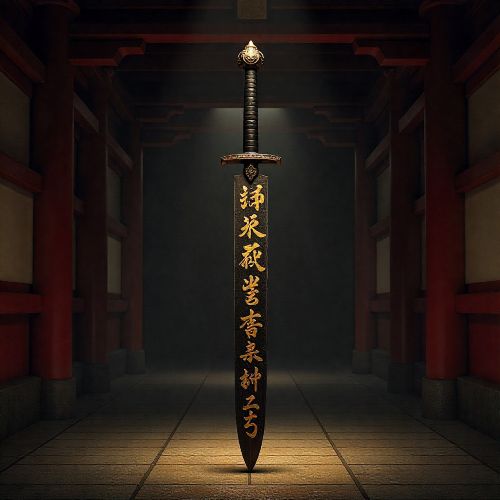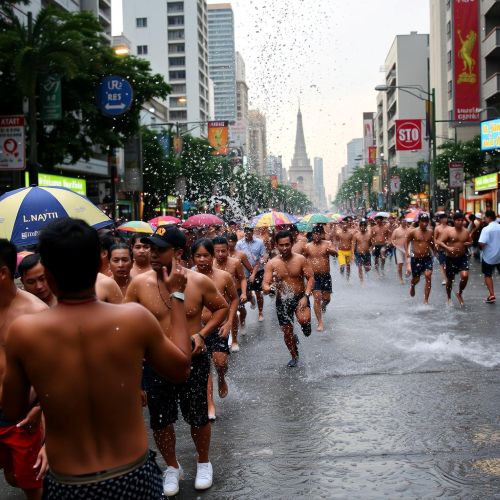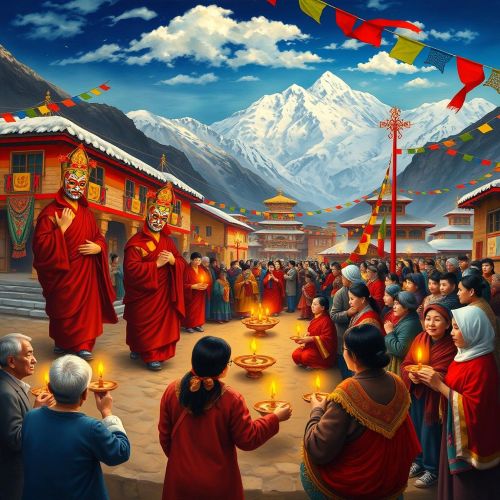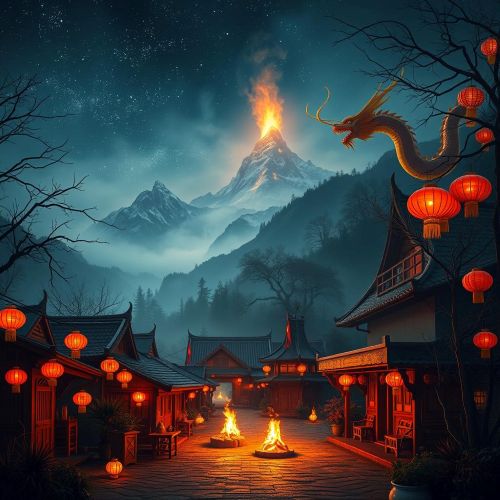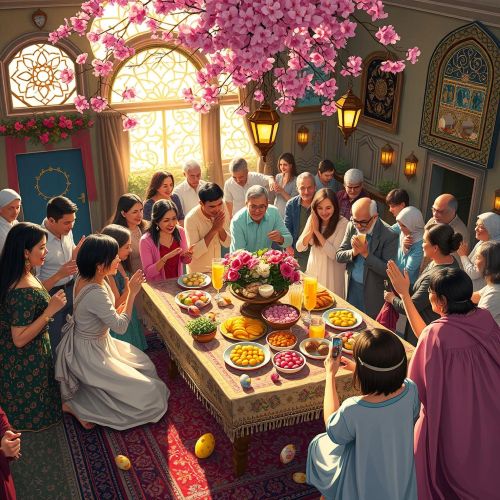Thingyan : The Burmese New Year
At a glance
| Description | |
|---|---|
| Location | Yangon, Mandalay, Naypyidaw |
| Country | Myanmar (Burma) |
| Dedicated To | Thagyamin |
| Duration | 4-5 days |
| Time of Year | April |
Introduction
Every April, Myanmar comes alive with Thingyan, the Burmese New Year festival that blends joyous water fights with deep spiritual meaning. Far from being just a seasonal celebration, Thingyan represents a symbolic act of cleansing—washing away the misfortunes and sins of the past year while preparing for a new beginning. Streets across the nation fill with laughter, music, and dance, but the roots of the festival are firmly anchored in Buddhist cosmology and Hindu mythology. It is a ritual of karmic renewal, cosmic balance, and cultural pride, making it one of Southeast Asia’s most significant and enduring traditions.
Connection with Mythology
The mythology of Thingyan revolves around Thagyamin, the Burmese counterpart of Indra, who descends from the heavens once a year during the festival. It is believed that he observes human actions and records them in two books: one for virtuous deeds and another for misdeeds. This cosmic judgment reflects Buddhist teachings on karma and accountability, reminding people that their actions shape their future lives.
A second myth explains the celestial backdrop of Thingyan. It tells of a Brahma who lost a wager of wisdom to Thagyamin and was beheaded. His head held destructive power—capable of drying seas, scorching earth, or burning the skies if misplaced. To prevent catastrophe, the head was entrusted to celestial maidens who carry it in turn each year. The passing of the head from one goddess to another marks the transition between old and new years, symbolizing cycles of time and cosmic order.
Through these myths, Thingyan becomes more than festivity—it embodies the rhythm of the universe, divine oversight, and human responsibility.
Main Activities
Thingyan spans four to five days, each with distinct practices that blend religious devotion with jubilant celebration. The opening day, A-kyo Nei, is reserved for quiet reflection and spiritual merit-making. People clean their homes, visit monasteries, bathe Buddha statues with scented water, and undertake precepts such as fasting after noon and abstaining from entertainment.
The following days, A-kya Nei and A-kyat Nei, erupt into the most famous part of Thingyan—the water throwing. Streets transform into lively arenas where children, families, and even strangers splash each other using bowls, buckets, hoses, and water guns. The act is not merely playful; it represents the washing away of misfortune and the purification of body and soul. Alongside this, communities host performances of music, dance, and humorous skits, often using satire to comment on social issues. On the final festival day, A-tet Nei, the tone shifts toward reverence. Families pour water on the ground as prayers for rain and good harvests, while people prepare offerings for monks and the needy.
The New Year’s Day itself is marked by acts of kindness and respect. Elders are honored through rituals such as washing their hair with traditional herbal shampoos. Families release fish and birds back into nature as a gesture of compassion, while many young boys temporarily ordain as novice monks in ceremonies known as Shinbyu. Free food stalls called satuditha provide meals to all, reflecting the values of generosity and community spirit. A beloved dish, moun-loun-ye-baw—sticky rice dumplings filled with jaggery, sometimes hiding a chili for fun—adds sweetness and humor to the celebration.
Importance in Cultural History
Thingyan is not only the most anticipated festival in Myanmar but also one of its oldest. Records trace its celebration back to the Bagan era in the 9th century, when Burmese kings embraced it as part of royal and religious life. Inscriptions from the 13th century describe Thingyan ceremonies, highlighting its enduring role in shaping cultural identity.
Over centuries, the festival has evolved from royal observances into nationwide festivities that unify villages, towns, and cities. During the colonial period, Thingyan took on an additional role as a symbol of Burmese identity, safeguarding traditions in the face of foreign influence. Today, it continues to bridge generations, passing down values of generosity, spirituality, and community engagement.
For Burmese society, Thingyan is more than a holiday. It reaffirms moral teachings, fosters social cohesion, and creates a collective sense of optimism as people step into the new year cleansed and renewed.
International Appeal
Though deeply Burmese in origin, the spirit of Thingyan has spread across Southeast Asia and beyond. Its themes of cleansing and renewal resonate with similar water festivals such as Songkran in Thailand, Pi Mai in Laos, and Aluth Avurudda in Sri Lanka, all of which share connections through Theravada Buddhist traditions.
Myanmar diaspora communities in countries like Singapore, Australia, the United States, and the United Kingdom celebrate Thingyan with their own versions of water fights, cultural shows, and communal feasts. The festival has become an important way for migrants to preserve and share their heritage with global audiences.
International recognition came in 2024, when Thingyan was inscribed on UNESCO’s Representative List of the Intangible Cultural Heritage of Humanity, cementing its role as a cultural treasure. Universities, cultural centers, and tourism boards now promote Thingyan events worldwide, showcasing Burmese music, dance, and cuisine alongside the famous water-splashing rituals.
Thingyan’s vibrancy has also entered popular culture, most famously through the Burmese classic film Thingyan Moe (1985), which portrayed the emotional and social layers of the festival. In recent years, the event has even been adapted as a stage for political expression, with citizens using its public gatherings to call for justice and change.
Source
Aung-Thwin, M., & Aung-Thwin, M. (2012). A History of Myanmar Since Ancient Times: Traditions and Transformations. Reaktion Books.
Schober, J. (2011). Modern Buddhist Conjunctures in Myanmar: Cultural Narratives, Colonial Legacies, and Civil Society. University of Hawai‘i Press.
Myint-U, T. (2006). The River of Lost Footsteps: Histories of Burma. Farrar, Straus and Giroux.
Samuel, G. (2010). Introducing Tibetan Buddhism. Routledge.
Wikipedia contributors. (2024). Thingyan. Wikipedia. https://en.wikipedia.org/wiki/Thingyan
Myanmar Immigration. (2025, January 21). Explore Myanmar’s Water Festival: A Joyful Splash of Tradition. https://www.myanmarimmigration.org/news/explore-myanmars-water-festival-a-joyful-splash-of-tradition
UNESCO. (2024). Myanmar traditional New Year Atā Thingyan festival. Intangible Cultural Heritage. https://ich.unesco.org/en/RL/myanmar-traditional-new-year-at-thingyan-festival-02085
Cultura.in. (n.d.). Thingyan Water Festival – Myanmar – Cultural Trends and Traditions. https://cultura.in/thingyan-water-festival-myanmar
SuperTravelr. (n.d.). The Origins of the Thingyan Festival, Burma. https://supertravelr.com/en/trip/myanmar/the-origins-of-the-thingyan-festival-burma-218D46A360/
Frequently Asked Questions
Lorem ipsum dolor sit amet, consectetur adipiscing?
Lorem ipsum dolor sit amet, consectetur adipiscing elit. Praesent convallis vestibulum justo, ac tincidunt nunc vehicula quis. Nullam id dolor quis orci malesuada feugiat. Curabitur aliquet libero at urna ullamcorper, ac ultricies nulla dapibus.
Lorem ipsum dolor sit amet, consectetur adipiscing?
Lorem ipsum dolor sit amet, consectetur adipiscing elit. Praesent convallis vestibulum justo, ac tincidunt nunc vehicula quis. Nullam id dolor quis orci malesuada feugiat. Curabitur aliquet libero at urna ullamcorper, ac ultricies nulla dapibus.
Lorem ipsum dolor sit amet, consectetur adipiscing?
Lorem ipsum dolor sit amet, consectetur adipiscing elit. Praesent convallis vestibulum justo, ac tincidunt nunc vehicula quis. Nullam id dolor quis orci malesuada feugiat. Curabitur aliquet libero at urna ullamcorper, ac ultricies nulla dapibus.
Lorem ipsum dolor sit amet, consectetur adipiscing?
Lorem ipsum dolor sit amet, consectetur adipiscing elit. Praesent convallis vestibulum justo, ac tincidunt nunc vehicula quis. Nullam id dolor quis orci malesuada feugiat. Curabitur aliquet libero at urna ullamcorper, ac ultricies nulla dapibus.
Lorem ipsum dolor sit amet, consectetur adipiscing?
Lorem ipsum dolor sit amet, consectetur adipiscing elit. Praesent convallis vestibulum justo, ac tincidunt nunc vehicula quis. Nullam id dolor quis orci malesuada feugiat. Curabitur aliquet libero at urna ullamcorper, ac ultricies nulla dapibus.



